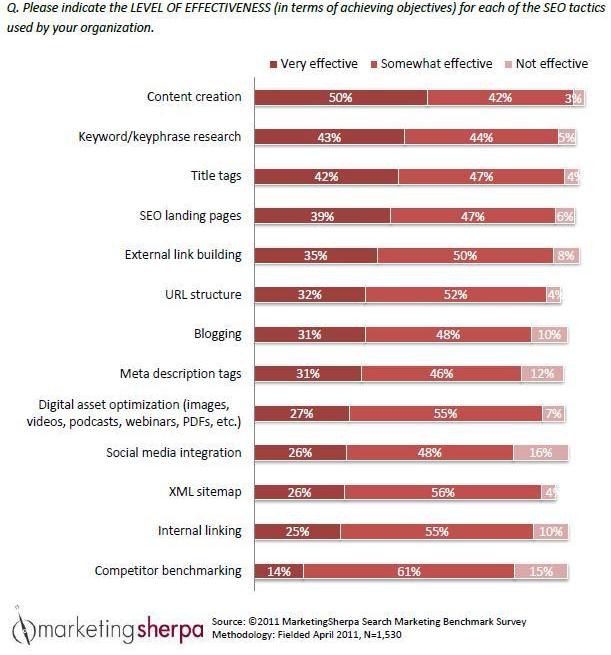Top SEO Techniques to Drive Organic Traffic to Your Blog

In the vast digital landscape, your blog is akin to a lighthouse guiding readers through the stormy seas of information. But how do you ensure your lighthouse stands out among the countless others? The answer lies in mastering top SEO techniques. By optimizing your blog, you can increase traffic, boost your organic search rankings, and ultimately, attract a loyal readership. Let's dive into the world of SEO and explore the best tactics to drive organic traffic to your blog.
Understanding SEO: The Foundation of Blog Optimization
Before we delve into specific techniques, it's crucial to understand what SEO (Search Engine Optimization) is. SEO is the process of optimizing your blog to improve its visibility in search engine results. Think of it as the secret sauce that makes your blog more appealing to search engines like Google. The better your SEO, the higher your blog will rank in organic search results, leading to increased blog traffic.
Top SEO Techniques to Boost Your Blog Traffic
1. Keyword Research: The Cornerstone of SEO
Keyword research is the backbone of any successful SEO strategy. It involves identifying the words and phrases your target audience is searching for. Tools like Google Keyword Planner, SEMrush, and Ahrefs can help you find relevant keywords. Once you have a list, incorporate these keywords naturally into your blog posts. Remember, the goal is to provide value to your readers, not just stuff keywords into your content.
2. On-Page SEO: Optimizing Your Blog Posts
On-page SEO refers to the optimization of individual web pages to rank higher in search engines. Here are some key elements to focus on:
- Title Tags and Meta Descriptions: These are the first things users see in search results. Make sure they are compelling and include your primary keyword.
- Header Tags (H1, H2, H3): Use header tags to structure your content and make it easier for search engines to understand.
- Internal Linking: Link to other relevant posts on your blog. This helps search engines understand the context of your content and keeps readers engaged.
- Image Optimization: Use descriptive file names and alt tags for your images. This not only helps with SEO but also improves accessibility.
3. Content Quality: The King of SEO
High-quality content is the lifeblood of any successful blog. Search engines favor well-written, informative, and engaging content. Here are some tips to create SEO-friendly content:
- Write for Your Audience: Understand your readers' needs and provide valuable information that addresses their pain points.
- Use Long-Tail Keywords: These are longer, more specific keyword phrases that are easier to rank for and often have higher conversion rates.
- Keep It Fresh: Regularly update your blog with new content. Search engines love fresh content, and so do your readers.
4. Technical SEO: The Backbone of Your Blog
Technical SEO involves optimizing the infrastructure of your blog to make it easier for search engines to crawl and index your content. Here are some key areas to focus on:
- Site Speed: Slow-loading pages can negatively impact your SEO. Use tools like Google PageSpeed Insights to optimize your site speed.
- Mobile-Friendliness: With the rise of mobile users, having a mobile-friendly site is crucial. Use Google's Mobile-Friendly Test to ensure your blog is optimized for mobile devices.
- XML Sitemap: An XML sitemap helps search engines understand the structure of your blog. Use tools like Yoast SEO to create and submit your sitemap to search engines.
5. Off-Page SEO: Building Your Blog's Authority
Off-page SEO involves activities outside your blog that can impact your search engine rankings. The most important aspect of off-page SEO is building high-quality backlinks. Here are some strategies to build backlinks:
- Guest Blogging: Write guest posts for other blogs in your niche. This not only helps you build backlinks but also exposes your blog to a new audience.
- Social Media: Share your blog posts on social media platforms. While social media links are no-follow, they can drive traffic to your blog and increase your content's visibility.
- Influencer Outreach: Reach out to influencers in your niche and ask them to share your content. This can help you build high-quality backlinks and increase your blog's authority.
Advanced SEO Techniques for Blog Traffic Generation
1. Featured Snippets: The Holy Grail of SEO
Featured snippets are the short answers that appear at the top of Google's search results. Optimizing your content for featured snippets can significantly increase your blog traffic. Here are some tips to optimize for featured snippets:
- Use Structured Data: Structured data helps search engines understand the context of your content. Use tools like Google's Structured Data Markup Helper to add structured data to your blog posts.
- Answer Questions: Featured snippets often answer specific questions. Use tools like AnswerThePublic to find questions related to your topic and answer them in your blog posts.
2. Voice Search: The Future of SEO
With the rise of voice assistants like Siri and Alexa, voice search is becoming increasingly important. Here are some tips to optimize your blog for voice search:
- Use Conversational Language: Voice search queries are often longer and more conversational than text queries. Use natural language in your blog posts to optimize for voice search.
- Focus on Local SEO: Voice search is often used for local queries. Optimize your blog for local SEO by including location-specific keywords and creating local content.
Conclusion: Your Journey to SEO Success
Mastering top SEO techniques is a journey, not a destination. By implementing the strategies outlined in this article, you can significantly increase your blog traffic and improve your organic search rankings. Remember, SEO is an ongoing process. Keep updating your blog with fresh content, stay on top of the latest SEO trends, and continuously optimize your blog for better performance.

FAQs
1. What is the most important SEO technique for blog traffic?
The most important SEO technique for blog traffic is creating high-quality, engaging content that provides value to your readers. While technical SEO and off-page SEO are crucial, content is the king of SEO.
2. How long does it take to see results from SEO?
SEO is a long-term strategy. It can take anywhere from a few weeks to several months to see significant results from your SEO efforts. Patience and consistency are key.
3. What is the difference between on-page SEO and off-page SEO?
On-page SEO refers to the optimization of individual web pages to rank higher in search engines. It includes elements like title tags, meta descriptions, and header tags. Off-page SEO, on the other hand, involves activities outside your blog that can impact your search engine rankings, such as building backlinks.
4. How can I optimize my blog for voice search?
To optimize your blog for voice search, use conversational language in your blog posts, focus on local SEO, and create content that answers specific questions.
5. What are featured snippets and how can I optimize for them?
Featured snippets are the short answers that appear at the top of Google's search results. To optimize for featured snippets, use structured data, answer specific questions in your blog posts, and format your content in a way that makes it easy for search engines to understand.

By implementing these top SEO techniques, you can transform your blog into a beacon of knowledge that attracts a steady stream of organic traffic. Happy blogging!
Belum ada Komentar untuk "Top SEO Techniques to Drive Organic Traffic to Your Blog"
Posting Komentar